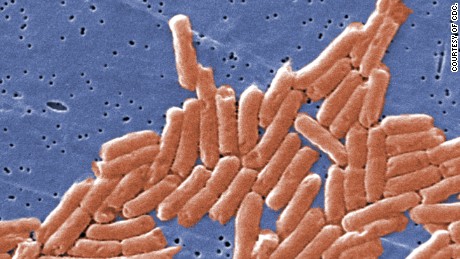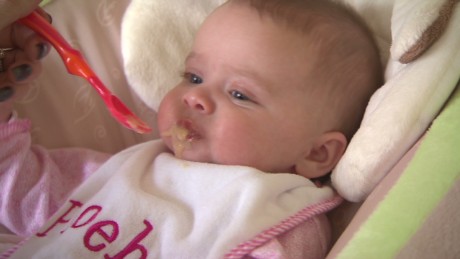(CNN)Parents and grandparents, listen up -- this is serious. More than half of children under age five poisoned by prescription pills ate them after an adult removed the child-resistant safety packaging.
These medications include those to treat diabetes or cardiac conditions, which are hazardous to children even in small doses.
That's the disturbing findings from a new study, published Wednesday in the Journal of Pediatrics, that analyzed the reasons behind 4,496 calls to five poison centers in Arizona, Florida and Georgia over an eight-month period in 2017.
The study found that as caregivers take their meds out of tough-to-open containers and put them in easy reach places for convenience, they are inadvertently contributing to some 50,000 emergency room visits by kids every year who swallow dangerous pills when adults aren't paying attention.
"These data suggest it may be time to place greater emphasis on encouraging adults to keep medicines in containers with child-resistant features," said study author Dr. Daniel Budnitz, of the Division of Healthcare Quality Promotion at the Centers for Disease Control and Prevention.
Get CNN Health's weekly newsletter
Sign up here to get The Results Are In with Dr. Sanjay Gupta every Tuesday from the CNN Health team.
The CDC partnered with Atlanta's Emory University School of Medicine and the Georgia Poison Center to do the analysis.
Parents and grandparents are most likely to do one or more of the following things that allow kids access to potentially dangerous medications, the study found:
- To remember to take their pills, the adult -- often a grandparent -- took the meds out of their child-resistant containers and put them into daily pill organizers that are easy to open.
- Adults also took the pills out and put them on bedside tables or kitchen counters for someone to take later.
- Adults put pills into plastic baggies or other small, easy-to-open containers for travel.
- And sometimes it's just an accident. Someone drops or spills pills and fails to find them all when they pick them up.
A public health success
Child-resistant packaging is a major public health success. When the Poison Prevention Packaging Act was passed in 1970, childhood deaths from unintentional medication poisonings dropped dramatically.
But in the 2000s prescription use in the US rose, driven by factors such as an increase in the use of statins, antidepressants, asthma and diabetes medications, as well as a nation increasingly addicted to opioids.
As the pill-popping increased, so did the numbers of accidental ingestions by children.
In 2010, for example, there were 540,000 calls to US poison control centers from adults worried about a child who swallowed pills; in the same year there were approximately 75,000 emergency department visits, the study said.
By the pills
Research shows that 70% of emergency department visits for unsupervised medication exposures in young children are because they have taken pills, or what science calls "solid dose medications."
But how do the kids get the pills? Is child-resistant packaging not working, or is there something else at play?
To find out, researchers trained workers at five poison control centers to ask specific questions of caregivers worried about children who had swallowed solid pills without their knowledge. Liquids, gums and lozenges were excluded, as were pills that were crushed to mix with food.
The survey found that in a third of all calls, the child was able to get the medication because it had been removed from the original container or packaging. But what was done by adults with those pills differed depending on the type of medication.
Diabetes and cardiac medications, for example, were more likely to be put into pill organizers or baggies, while ADHD medications and opioids were more likely to be found outside of any container, the study found.
"Nonprescription medications were most often accessed from the original containers, but for many of these medications, child-resistant packaging is not required because of low potential for toxicity," said the CDC in a statement.
Get CNN Health's weekly newsletter
Sign up here to get The Results Are In with Dr. Sanjay Gupta every Tuesday from the CNN Health team.
"There is an opportunity here for innovating medication container options that promote adult adherence and provide portability and convenience, while maintaining child safety," Budnitz said.
It's up to caregivers
It's best to keep medications in the original child-resistant packaging. However, if you have to remove them, the CDC suggests the following precautions:
- Make sure the container you move the pills to is child-resistant.
- Always re-close the container after every use -- and double check that it is closed.
- Don't leave the pill container in sight. Put it up high, out of a child's reach and sight immediately after every use.
- Do the same for any purses, bags or pockets with medicines.
- If you spill pills, do whatever is needed to make sure they are all picked up, such as vacuum the area.
- Keep the national Poison Control hotline number -- (800) 222-1222 -- in your phone, and use it immediately if you think your child may have swallowed a vitamin or medication. Do that "even if you are not sure" they were exposed, the CDC says.
































